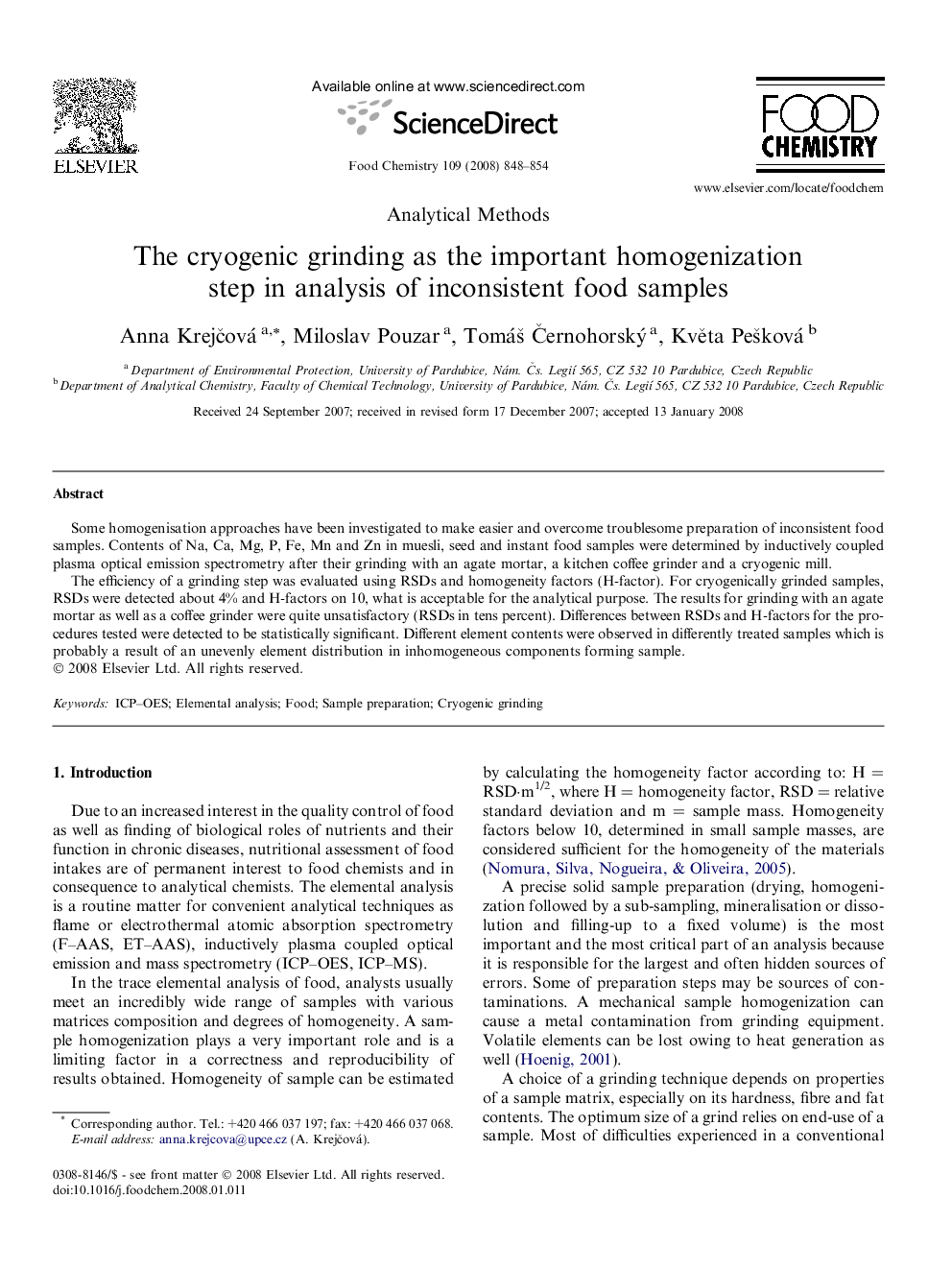| Article ID | Journal | Published Year | Pages | File Type |
|---|---|---|---|---|
| 1186892 | Food Chemistry | 2008 | 7 Pages |
Some homogenisation approaches have been investigated to make easier and overcome troublesome preparation of inconsistent food samples. Contents of Na, Ca, Mg, P, Fe, Mn and Zn in muesli, seed and instant food samples were determined by inductively coupled plasma optical emission spectrometry after their grinding with an agate mortar, a kitchen coffee grinder and a cryogenic mill.The efficiency of a grinding step was evaluated using RSDs and homogeneity factors (H-factor). For cryogenically grinded samples, RSDs were detected about 4% and H-factors on 10, what is acceptable for the analytical purpose. The results for grinding with an agate mortar as well as a coffee grinder were quite unsatisfactory (RSDs in tens percent). Differences between RSDs and H-factors for the procedures tested were detected to be statistically significant. Different element contents were observed in differently treated samples which is probably a result of an unevenly element distribution in inhomogeneous components forming sample.
